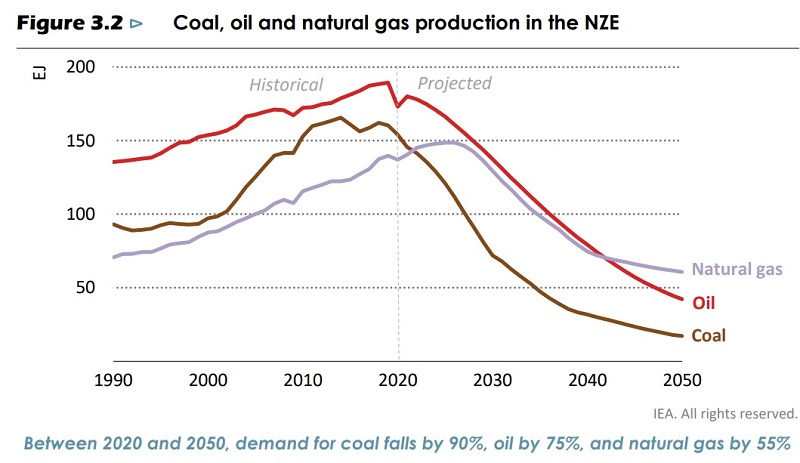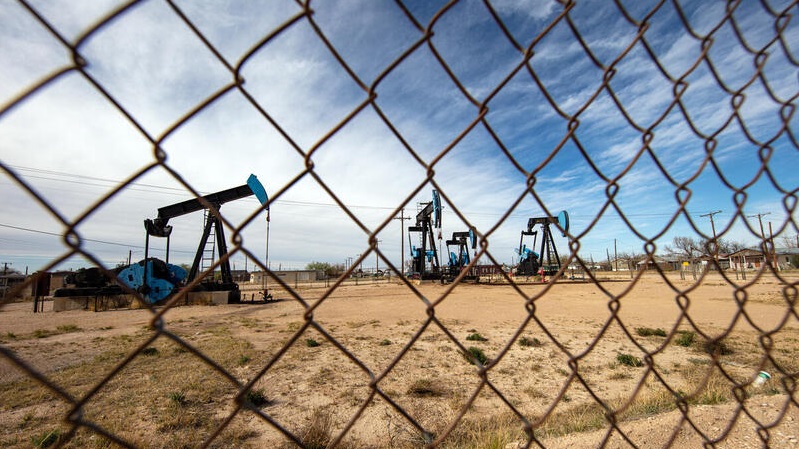The US government has been criticised for plans to hand out up to $500 million to help an oil company suck carbon out of the air in Texas.
The Department of Energy announced it would invest in two direct air capture facilities, which will suck the planet-warming gas out of the atmosphere and store it underground.
One of those facilities will be built by Occidental Petroleum, whose CEO Vicki Hollub said earlier this year that direct air capture will help “preserve our industry” and get more oil out of the ground.
The proper role
The Intergovernmental Panel on Climate Change (IPCC) scientists say the world needs to develop some direct air capture to compensate for the emissions of the hardest to clean up sectors.
But IPCC author Glen Peters told Climate Home that Occidental “do not really understand the role of carbon dioxide removal” and Hollub’s views are “not consistent with the science”.
Peters said that “in principle” the US government should not have given Occidental this money, although he questioned how such an exclusion could be justified.
🌎 JUST ANNOUNCED: We’re investing $1.2B to develop Direct Air Capture Hubs in Texas and Louisiana to remove CO2 directly from the air, create thousands of jobs, and kickstart an industry critical to addressing the climate crisis.https://t.co/9jRhP7cV5x
— Secretary Jennifer Granholm (@SecGranholm) August 11, 2023
The $1.2 billion handout
In November 2021, Congress members from the Democrats and Republicans agreed to a Bipartisan Infrastructure Law, which included $1.2 billion for direct air capture hubs.
On Friday, they announced that up to $500 million each of this investment would go to Occidental’s hub in Texas and to another center run by air direct capture company Climeworks in Louisiana.
The department said these investments would “kickstart a nationwide network of large-scale carbon removal sites to address legacy carbon dioxide pollution and complement rapid emissions reductions”.
Together, the department expects all these projects to remove more than two million tons of carbon dioxide a year, a similar amount to Fiji and its million islanders currently emit.
What is direct air capture?
Whereas carbon capture technology stops carbon dioxide gas from entering the atmosphere, forms of carbon dioxide removal like direct air capture suck it directly out of the atmosphere.
It currently barely exists as an industry. Twenty-seven direct air capture plants have been commissioned worldwide, capturing under 10,000 tonnes of CO2 a year, according to the International Energy Agency (IEA). That’s about the emissions of 2,000 petrol-powered cars.
Indonesia falls short on peatland restoration, risking destructive fire season
The IPCC says that scaling up carbon removal is “unavoidable” in order to offset emissions from activities that are hard to clean up.
Peters said it is “is really to get rid of the emissions that are too expensive, like steel or cement after improving material use and adding [carbon capture and storage], then [carbon removal] might mop up the rest”.
Not oil’s saviour
But Hollub sees a much bigger role for carbon dioxide removal than scientists and independent energy experts do.
Last March, she told an oil conference that direct air capture “is going to be technology that helps to preserve our industry” and gives it “a license to continue to operate for the 60, 70, 80 years that I think it’s going to be very much needed”.
But Peters said that Hollub’s statement “is not consistent with the science”. He said that “scenarios show that even with mind-boggling amounts of carbon dioxide removal, coal, oil and gas drop rapidly”.
The IEA has said that, if the world is to limit global warming to 1.5C, there should be no new fossil fuel production facilities. Its forecast states fossil fuel use should fall from providing almost four-fifths of total energy supply today to slightly over one-fifth by 2050.

The IEA says oil production must fall if the world is to limit global warming to 1.5C (Photo credit: IEA)
Inflated figures
Occidental has previously been accused of inflating the role of carbon dioxide removal when it told investors that it could capture 10 gigatonnes by 2030.
IPCC author Zeke Hausfather thinks “carbon dioxide removal is an important part of getting to net zero”.
But he tweeted last year that Occidental’s projections are “deeply problematic and oversell the role of CDR” as “there is no world” in which they come true.
“CDR is not a replacement for deep emissions reductions, and anyone who says differently is selling something”, he said.
Carbon dioxide removal is an important part of getting to net-zero and stopping the world from warming. But it cannot be used as an alternative to deep emissions reductions.
Graphs like this from @1PointFiveCCUS are deeply problematic and oversell the role of CDR. pic.twitter.com/Rut7QsgCOs
— Zeke Hausfather (@hausfath) June 14, 2022
Easing workers consciences
As the climate crisis intensifies, fossil fuel companies are finding it harder to recruit, particularly among younger people.
Hollub told the Outrage and Optimism podcast that Occidental’s direct air capture business helps them keep staff happy.
“The employees love this, especially our earlier career employees who now had questions about whether or not they should be working for an oil company”, she said.
But the initial reason for their interest, she said, was Occidental saw sucking carbon dioxide out of the atmosphere as a cheaper long-term way of getting the gas. That makes it cheaper for them to get more oil out of the ground.
Mainstream economists accused of playing down climate threat
She explained to the podcast that carbon sucked from the atmosphere is “a long term source, a non-declining source of CO2 and it could be at lower cost if we could get the facilities designed correctly and optimise over time – so that’s what started us down the path”.
On top of the two projects already selected, the energy department announced 19 projects that it was talking to regarding funding.
Oil company Chevron were among those with projects chosen, as well as universities, engineering companies and green campaign groups like the Rocky Mountain Institute.
This article was updated on 16 August as it originally incorrectly said that a company called Fervo was an oil company. In fact, it is a geothermal company.
